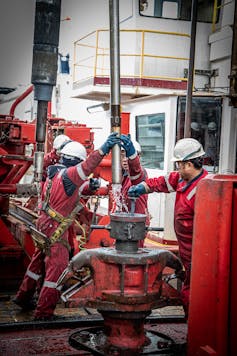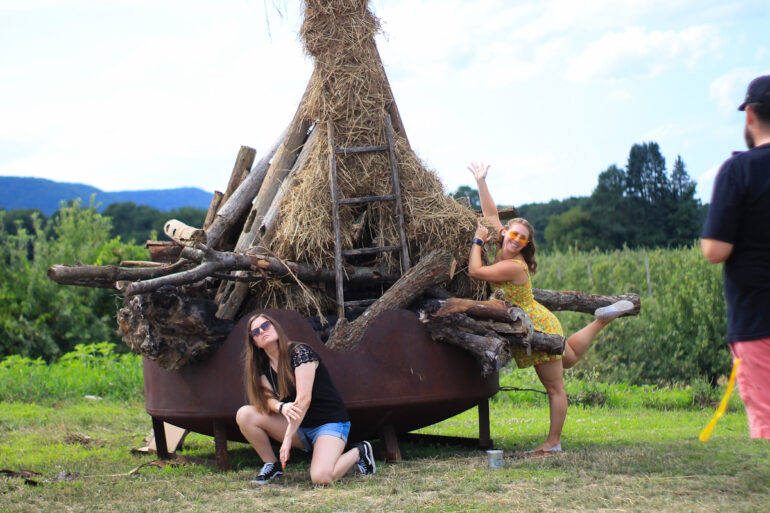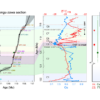“Core on deck!”
For two months, whenever I heard that cry, I would run up to the deck of the JOIDES Resolution to watch the crew pull up a 30-foot (10-meter) cylindrical tube filled with layered, multicolored rock and sediment drilled from the seafloor beneath our ship.

The crew drilled more than 780 cores from the seabed on the expedition.
Erick Bravo/IODP
In the winter of 2022, I spent two months cruising the south Aegean Sea on board the International Ocean Discovery Program’s JOIDES Resolution as part of IODP Expedition 398. My geologist colleagues and I used this former oil exploration ship to drill deep into the seafloor and reveal the volcanic history of the area off the coast of Santorini, Greece.
As a scientist who studies the chemistry of volcanic rocks, I use my expertise to correlate volcanic sediments to the eruption that caused them and to understand the conditions that magma experienced both at depth underneath a volcano and during an eruption.
Our expedition’s drilling of the seafloor revealed a massive but previously unknown volcanic eruption that took place more than 500,000 years ago. This discovery expands our understanding of the volcanic activity in the chain of volcanoes comprising the South Aegean Volcanic Arc, which will allow for a more accurate hazard analysis of this region.
Building a more complete volcanic history
Archaeologists have long been fascinated with the late Bronze Age eruption of Santorini around 1600 BCE. This eruption is associated with the decline of the Minoan civilization on the nearby island of Crete. Geologists also have significant interest in the region, due to the volatility of the volcanic and seismic activity in this area that is home to about 15,000 residents and attracts around 2 million tourists per year.
Although there’s significant on-land documentation of the Santorini volcano, scientists know that this record is incomplete. On land, erosion, vegetation and additional eruptive events often cover or obscure older volcanic deposits, resulting in a fragmentary history. The deep-sea drilling enabled by the IODP’s JOIDES Resolution gives researchers access to a geologic record rarely preserved on land.
Following a volcanic eruption, pyroclastic materials – pieces of rock and ash formed during the eruption – settle through the water column to collect on the seafloor. There, clays and biological material, such as the shells of tiny marine organisms, rain down continuously, capping the volcanic rock deposits. This process preserves a record of an individual eruption as a single layer. Layers build with time, with each successive volcanic event creating a near-continuous chronologic record of the volcanic history of the region.
Expedition 398’s mission was to access this deep-sea record in order to document the extensive history of eruptions in each area of concentrated volcanic activity.
IODP Expedition 398
IODP…



